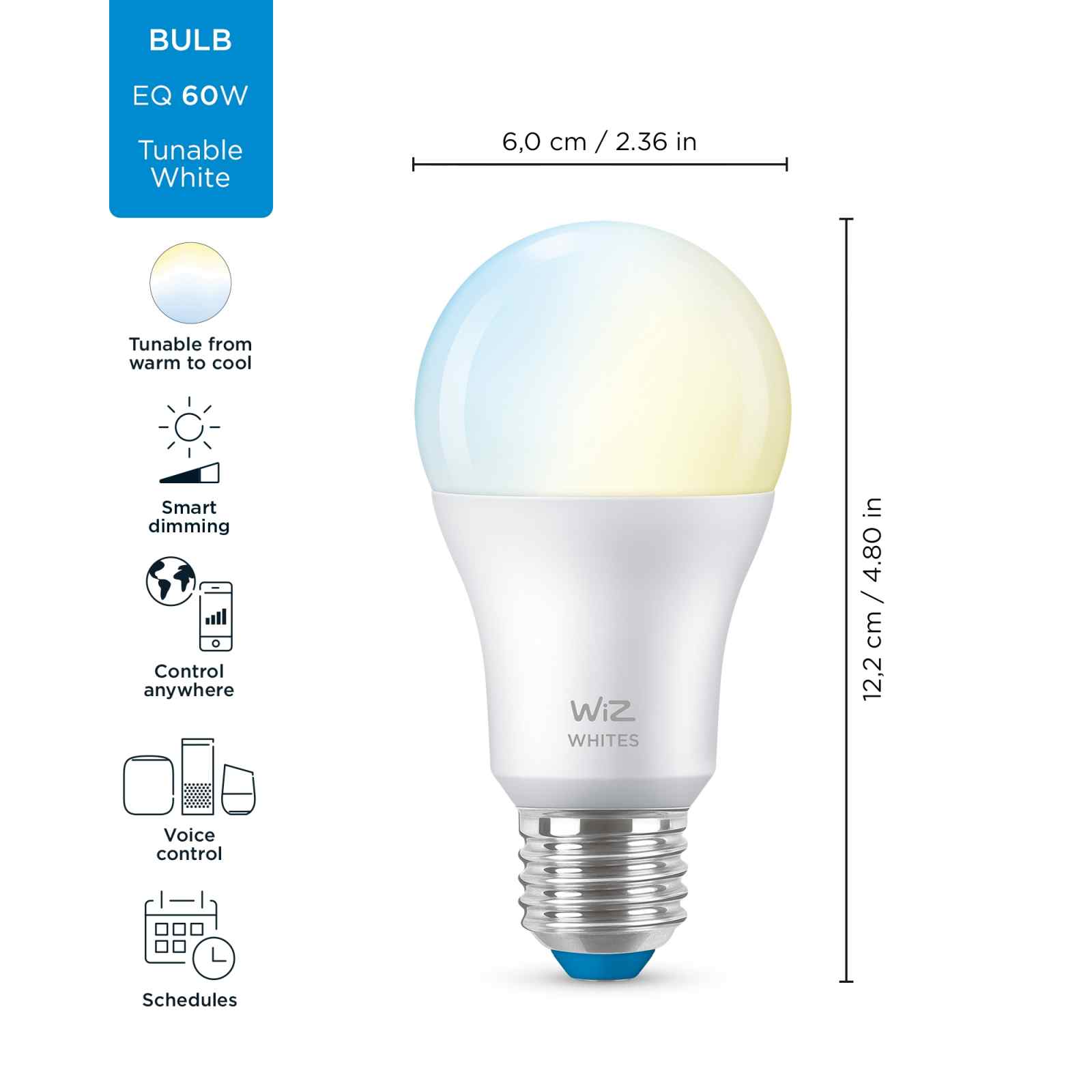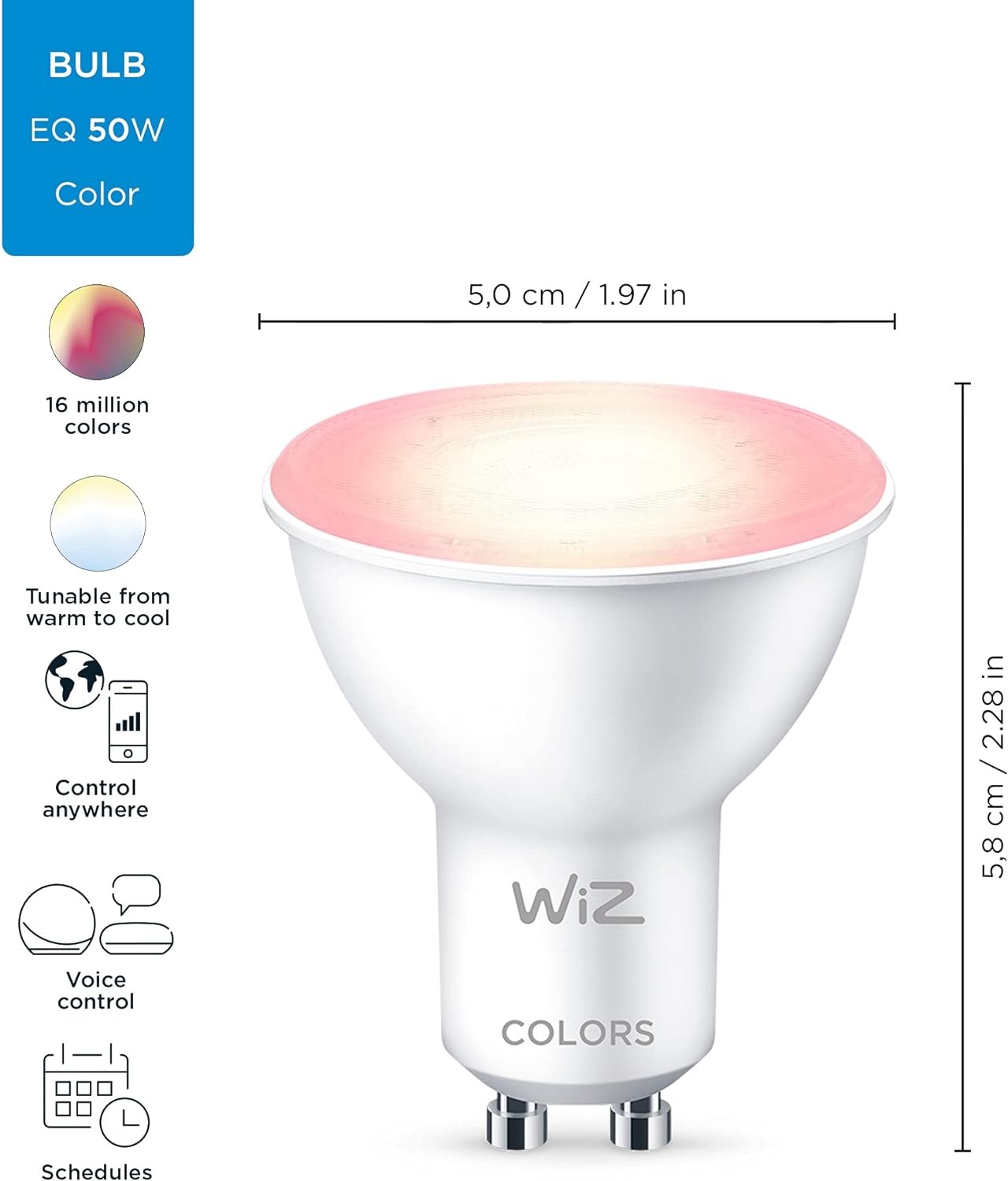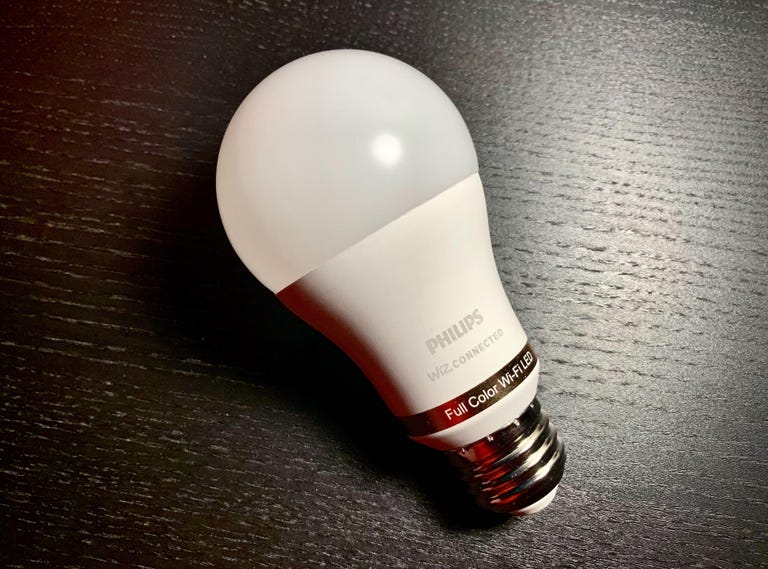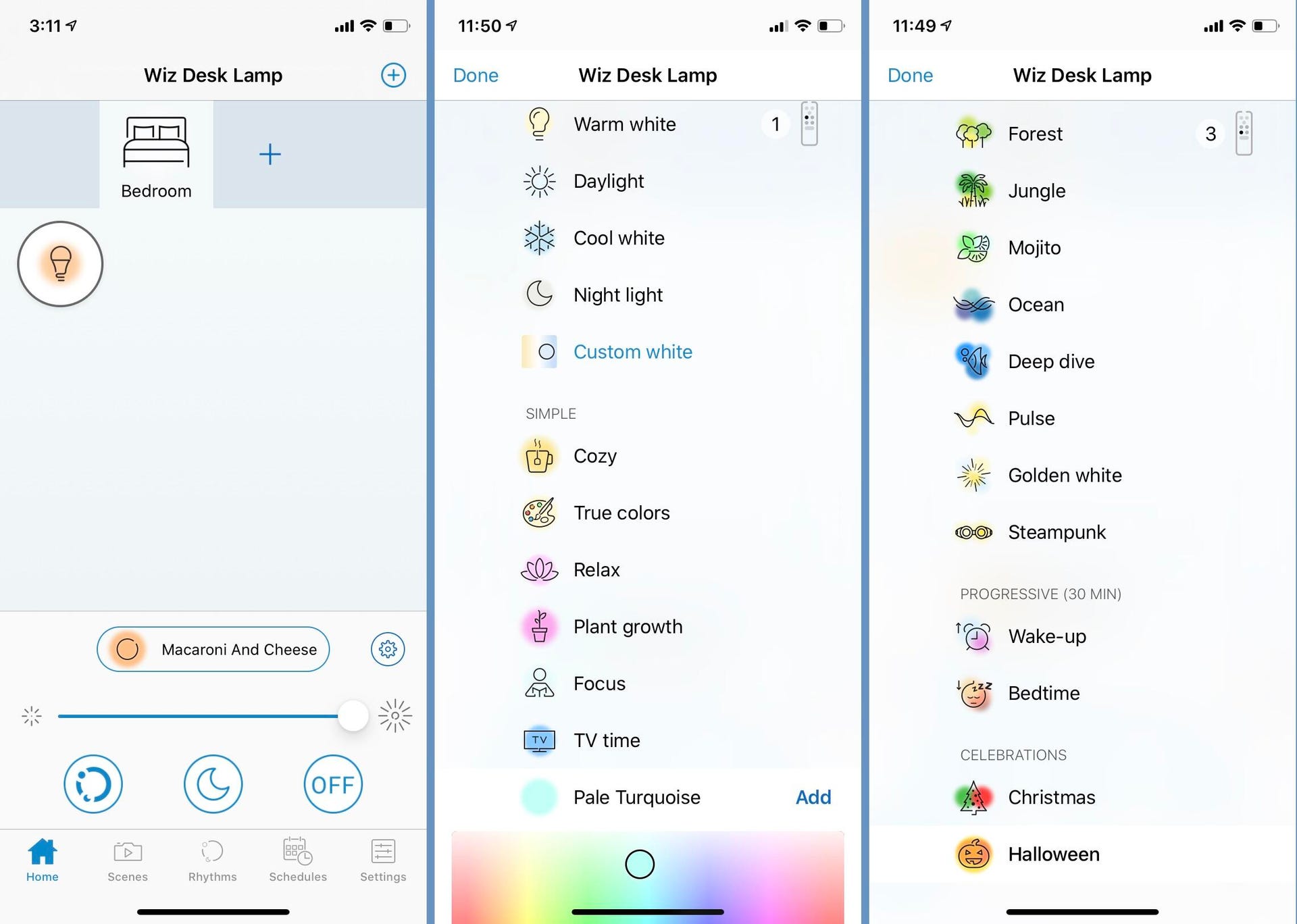The WiZ LED GU10 full color spot beam bulb brings smart lighting for your daily living. Ideal for accent, display and task lighting. Create the ambience of your choice with 16 million colors as well as warm to cool white light. You can set schedules to turn lights on and off according to your daily or weekly routines, control with your smartphone or your voice and have remote access to your lights even when you’re away. WiZ lights connect to your existing Wi-Fi, no additional hardware is needed.


$25.90 – $31.90
3 payments at 0% interest with ![]()
Available in when you proceed to Checkout page or Click here.
For delivery of your products. Please find shipping option in Cart Checkout.
To find out more about our shipping fees. Please read brief on Shipping Policy.

You can make your reservation order from us without paying a single cent until we confirm your order and stock availability.
A follow up call or WhatsApp message (within 1-2 Working days) to inform you of your order and advise you on the payment method.
All prices you see are NETT with NO mark up.
Order with confidence!

For the most part, the Philips Wiz Connected LED works like any other light bulb — just screw it in and turn it on when you want light. The default setting puts out a claimed 800 lumens of brightness at a yellowy color temperature of 2,700 K. That’s the same as you’ll get from a standard 60-watt incandescent light bulb, but since this is an LED we’re talking about, the power draw is much less — just 8.5 watts.
As for the brightness, I’m still working from home without access to my lighting lab, so I can’t double-check the specific lumen count just yet. Still, in comparison with other bulbs I’ve tested in the past, including the Philips Hue White LED, it’s easy to see that the Philips Wiz Connected LED does just fine at default settings. That’s much better than the original Wiz LED, which was released before 2019, when the Hong Kong-based startup was purchased by Signify (formerly known as Philips Lighting). That bulb was too dim at its default setting, and only hit peak brightness at an awkward white light color temperature of 4,200 K.
The colors are much less bright than the white light settings, which is to be expected. What’s important is that they’re bright enough to make an impact, and for the most part, accurate in tone — though, it struggles to put out bold shades of yellow or orange. In some cases, the presets used by Alexa and Google aren’t the greatest, either. Ask either assistant for pink, for instance, and you’ll get milky white light.
[videopress 1BuTNMRP]
Enlarge Image
Ugly-looking pinks aside, stalwarts like red, blue and green come through just fine — and if you open the Wiz app, you’ll find a color selector with dozens of different settings, including oddball Crayola rejects like “Razzmatazz,” “Free Speech Green” and “Gorse.” What’s extra odd is that Alexa and Google seem to recognize some of these settings (including a great-looking “Deep Pink”), but not all of them. Google Assistant seemed to recognize more of them, at least, sort of. When I asked it to jump to the “Macaroni and Cheese” setting, it triggered that ugly, milky white again — but that’s better than I got from Alexa, which just looked at me funny before adding mac and cheese to my grocery list.

Color-changing smart bulbs are futuristic and flashy, and they make the smart home fun. That’s why they’ve always been so much more expensive than white light smart bulbs — not because RGB diodes cost a fortune, but because they can have a dramatic impact on the way your home looks and feels. For years, manufacturers have translated that into markup, positioning full-color smart lighting as a luxury.
Source : https://www.cnet.com/reviews/philips-wiz-connected-smart-wi-fi-led-review/
Click on the Whatsapp Icon to ask us any question!
Remember to indicate on the product you are enquiring about.